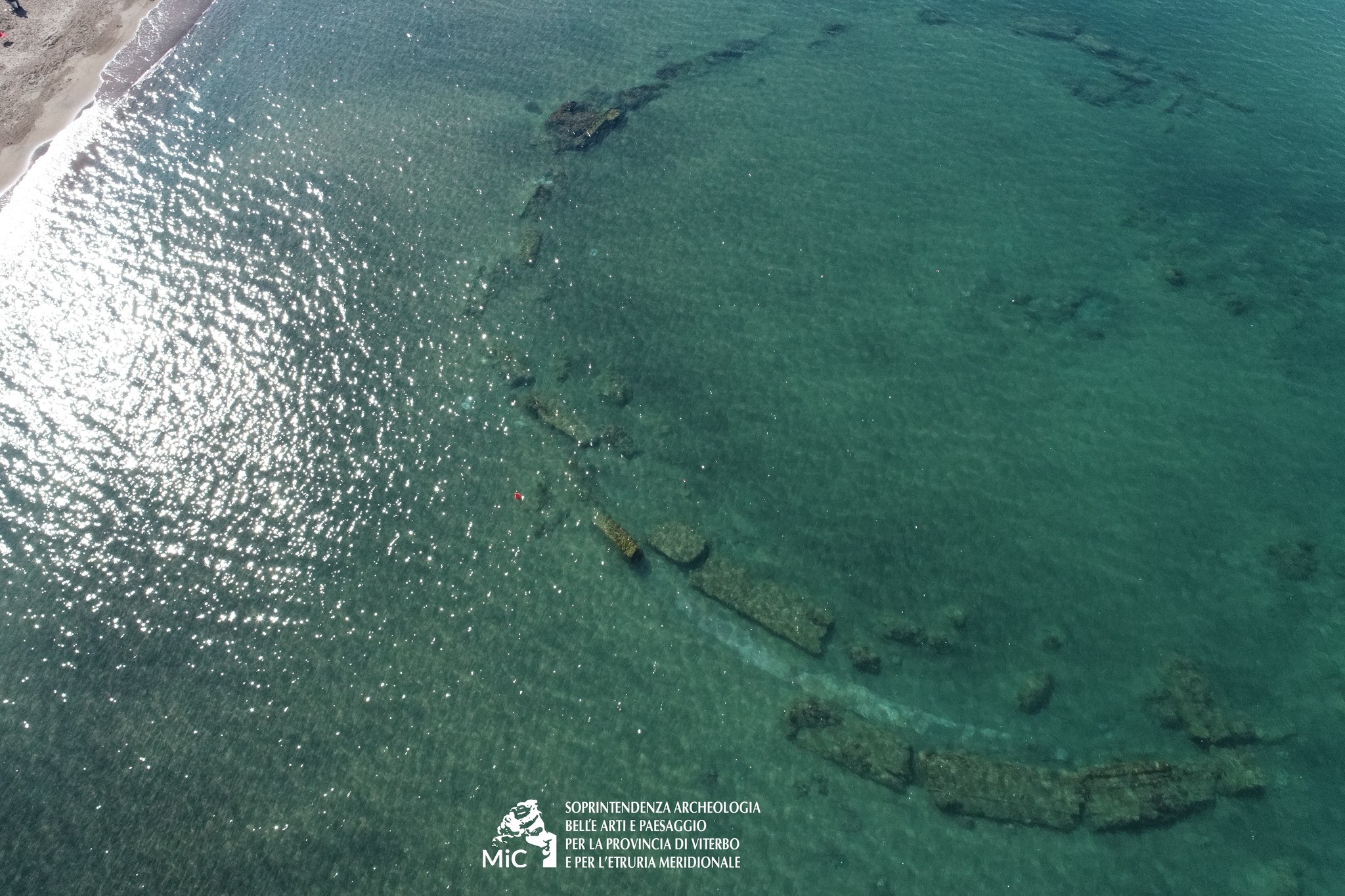Many centuries ago, this was the pavilion of a villa where Rome’s rich and famous would relax and drink wine while they overlooked the Mediterranean Sea. As the years passed, the structure became lost to the waves and continues to lurk there to this day.
The submerged ruins can be found on the coastline of Campo di Mare in Cerveteri, a short journey from Italy’s capital of Rome.
It consists of a circular structure with a diameter of around 50 meters (164 feet), formed of two chunky walls approximately 3 meters (~10 feet) from each other. Among the ruins, there’s also some remarkable preserved “opus spicatum” flooring, a type of masonry used in Roman times where bricks are laid in a herringbone pattern.

Another aerial view of the circular structure found in Cerveteri, Italy.
Image credit: Superintendency of Archaeology, Fine Arts and Landscape for the province of Viterbo and Southern Etruria
Using divers and drones, the sunken ruins recently underwent a restoration project by the Superintendency of Archaeology, Fine Arts and Landscape for the province of Viterbo and Southern Etruria, an arm of the local government, together with CSR Cultural Property Restoration, a private company.
Commenting on the ruins, the government authority said they belonged to an “extremely elegant” pavilion attached to a grand villa, most likely owned by a wealthy member of the Roman aristocracy.
In the days of the Roman Empire, the house was located along Via Aurelia, one of the main highways that led straight to the capital. They believe the ruins of the villa are likely to be found along the coastline buried beneath the sand, but they are yet to be discovered.

The stunning “opus spicatum” flooring, a type of masonry used in Roman times where bricks are laid in a herringbone pattern.
Image credit: Superintendency of Archaeology, Fine Arts and Landscape for the province of Viterbo and Southern Etruria

An underwater view of the chunky walls that made up the circular structure.
Image credit: Superintendency of Archaeology, Fine Arts and Landscape for the province of Viterbo and Southern Etruria
Following this renovation project, the team hopes to carry out geophysical surveying of the site, which might be able to uncover more remains that aren’t yet visible to the human eye. By gathering this evidence, it will help to build the case that the site deserves protection and safeguarding.
Cerveteri had its heyday during the era of the Etruscan civilization, a culture that flourished in central Italy between the 8th and 3rd century BCE until it was conquered or assimilated by the region’s growing power, Rome.
Among the numerous Etruscan and Roman remains in the town, it’s home to the largest ancient necropolis in the Mediterranean, used from the 9th to the 1st century BCE. Known as Banditaccia, UNESCO describes the site as having “thousands of tombs organized in a city-like plan, with streets, small squares, and neighborhoods.”
Source Link: Sunken Ruins Show Lifestyles Of The Rich And Famous In Ancient Rome